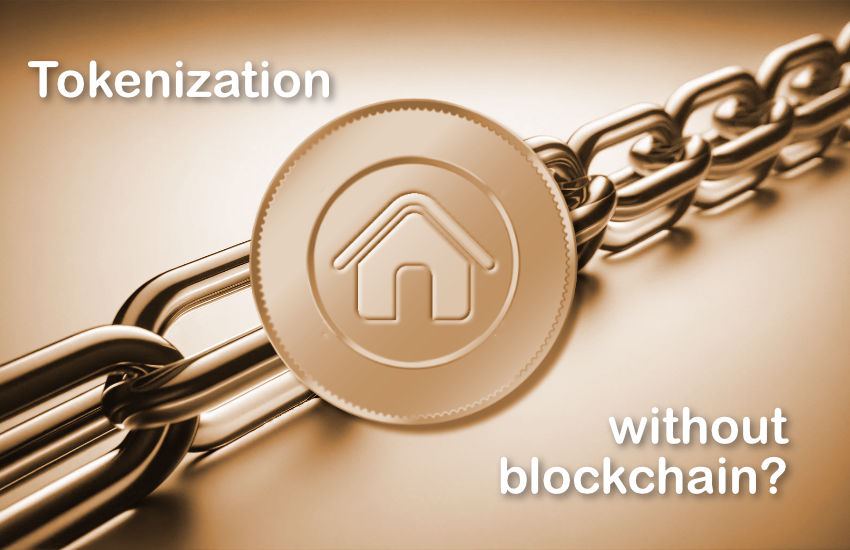Yesterday, Acting Comptroller of the Currency Michael J Hsu, gave a talk about cross border crypto-asset regulation as part of a Financial Stability Board (FSB) workshop. At the end of his remarks, he posed the question of the link between blockchain and tokenization.
“Crypto advocates have cited tokenization as a key use case. But if blockchains are not necessary to achieving that, one wonders what the future landscape of tokenized real-world assets and liabilities might look like, and what the financial stability profiles of different scenarios might be,” he said.
It’s not the first time he’s noted that tokenization doesn’t have to use blockchain.
Tokenization and blockchain
In his talk, Mr. Hsu also referred to a tokenization event held by the Office of the Comptroller of the Currency (OCC) earlier this month, in which he said that “blockchains and distributed ledgers were barely mentioned.” First off, the OCC created the agenda, which mainly included academics and regulators as speakers. No commercial banks participated on the panels and blockchain was not part of the agenda.
Secondly, there were some major exceptions, particularly the only panel that included industry practitioners, which focused on tokenization use cases. Our rough transcript of that session found that the phrase ‘blockchain’ was mentioned more than 30 times during 45 minutes.
At the same event, Hyun Song Shin of the BIS also discussed tokenization. We previously highlighted that the BIS paper on its Unified Ledger concept focused on tokenization but didn’t mention blockchain. In his talk at the OCC event, Mr. Shin emphasized that discussion about concepts such as tokenization should start from a technology-agnostic perspective.
“Tokenization is not synonymous with decentralization or blockchain or any other mention of the technology itself,” he said.
“What’s important here is the functionality of enabling the contingent performance of actions (programmability), and that can be done on a centralized platform, decentralized platform or indeed with the permissioned DLT systems – they sort of fall somewhere in between centralized and decentralized.”
Broader tokenization benefits
There’s no question that business problems require functional solutions and the technology choice should be secondary. At the same time, should one limit the potential functionality in order to avoid using a particular technology? Especially if that functionality could potentially address major frictions and save large sums of money.
The programmability aspect of tokenization is important. But it’s also about composability. It’s about creating large open networks where assets can move with minimal friction. Interoperability is necessary, but compared to institutions’ current fragmented tokenization efforts, there should be a smaller number of large open networks.
Most importantly, consumers should be able to move far more easily between intermediaries.
Today that movement is full of friction. To buy an asset, you currently have to sell assets locked at one intermediary (eg. a broker) and wait for days to receive the money. Then, you go to another intermediary to buy a different kind of asset, such as a piece of real estate or art. This all takes quite a bit of effort.
In the future most things will be available via a single wallet and almost instantaneously. You may work through multiple intermediaries or ‘protocols’, but the transition will be seamless. Often you will be able to choose to keep the first asset and instead use it as collateral to buy a different type of asset.
Why regulators have blockchain reservations
At a more general level, regulators have expressed several reservations about blockchains. A big part of the reluctance may come from the conclusion that a large proportion of consumer financial activity could eventually be on public blockchains. That’s even if the work starts in a private blockchain environment. Not only would regulators struggle to influence the governance of public blockchains, weakening their ability to do their jobs, but public blockchains run on cryptocurrencies.
The regulators’ response to Facebook’s Libra/Diem illustrated that they generally find stablecoins and cryptocurrencies a threat. That’s not just to financial stability but to their own roles and the power of central banks.
That’s the big picture concern. Then there are plenty of more detailed ones. There’s the tendency of regulators to overstate the fraud and anti-money laundering usage compared to cash and the banking system, though fraud is unquestionably an issue.
From a technical perspective, blockchains suffer from poor scalability and the bearer nature of many instruments. That means the private key holder is the owner, resulting in a theft risk similar to cash. Additionally, there’s currently weak interoperability.
While there’s a shopping list of issues to be concerned about with blockchain, tokenization clearly presents a massive opportunity that the likes of the BIS recognize. What’s more likely is some aspects of that tokenization will be centralized – think central bank money – and some aspects may not be.
Rather than dismissing a technology, it’s worth exploring the potential of tokenization as currently envisioned. That vision came from the blockchain ecosystem. Then ask what would you miss without blockchain? In the absence of a concrete alternative proposal, benefits such as large open networks, market driven innovation, composability and true (versus limited) mobility could be missing.

